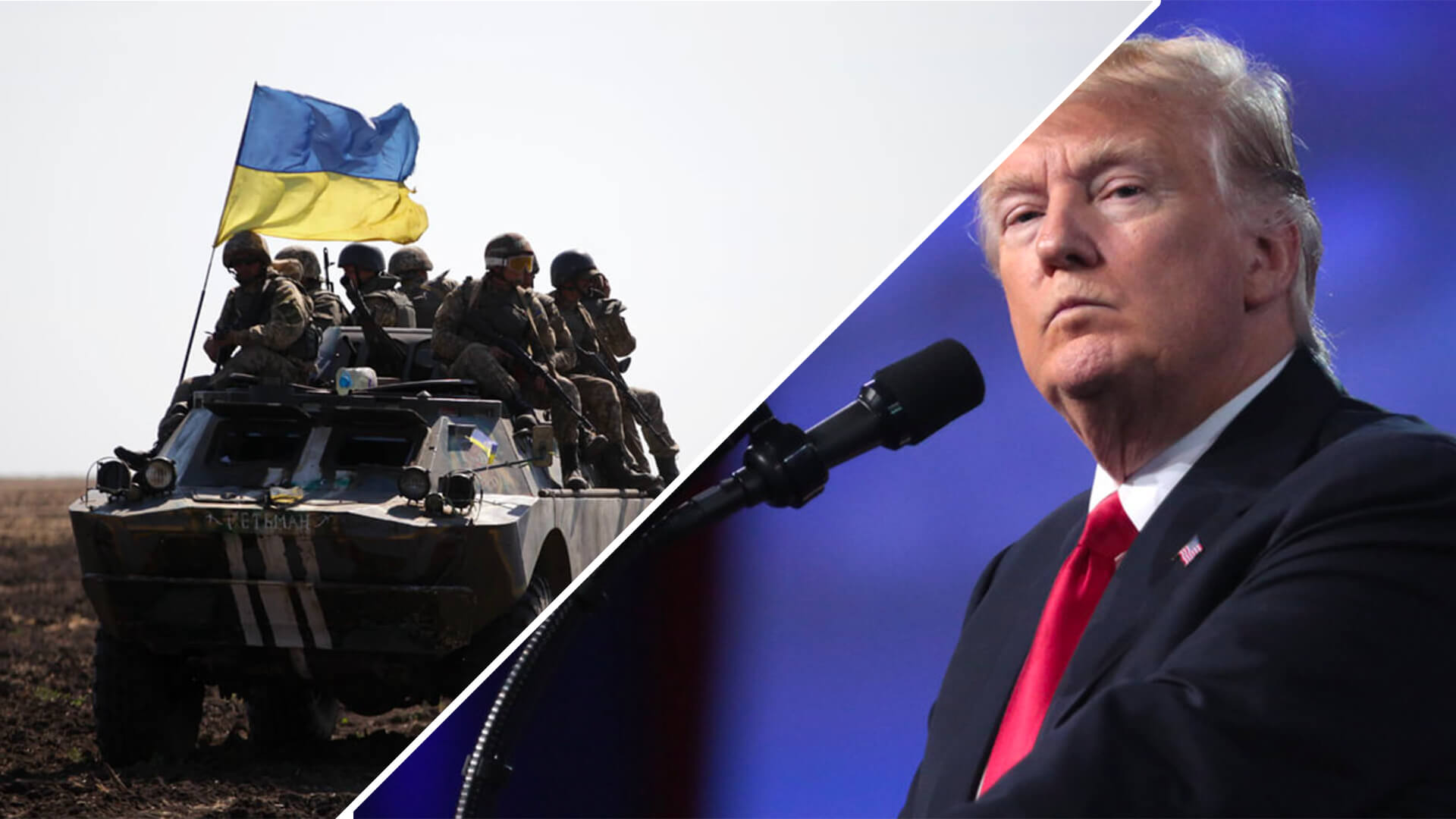Both the Ukrainians and the Russians will hate this plan. For Ukraine, the plan bans NATO membership, cuts the military in half, establishes weapons restrictions, and cedes key regions like Crimea, Donetsk, and Luhansk. For Russia, the plan accepts Ukrainian independence, freezes military ambitions in Europe, affirms the post-Cold War security order, and directs frozen assets towards Ukraine and the US.
Transcript
Hey, everybody. Peter Zeihan here, coming to you from Colorado. And today I’m going to pick up on something that the Patreon crowd has been pestering me for for over a week, and that’s to comment on Donald Trump’s 28 point peace plan that he’s trying to impose upon the Russians and the Ukrainians. And the reason that I have held out until now is because it hadn’t been published.
And so we were only seeing things that were leaked out of Ukraine or Russia about how unacceptable it was. And rather than just repeat what other people were saying about something that hadn’t seen, I figured that wasn’t fair to anyone. So anyway, the full thing is now released. We’re going to go ahead and publish that as an attachment to this video so you can read it yourself. I think Donald Trump is getting a little bit of crap from all quarters on this one for good reason. Not because I think that the document is overly pro Russia or pro Ukraine, just because there’s a lot in it that’s going to piss off a lot of people. It’s probably unworkable. But let me break it down.
So the core concept behind this fight is that Ukraine knows that its demographics are turning terminal, and it knows it’s going to lose the ability to field a large army to defend themselves against external aggressors, or at least as they define it, external aggressors. And in the post-Soviet settlements going back to 1992, Russia’s borders actually got longer than they were into the Soviet period and were drawn back from a series of geographic barriers that they had counted on for defense during the Soviet time.
So if you look at the map of the Soviet Union versus Russia, they were anchored in the Baltic Sea, in the Polish plains, and in the Arabian Gap, which is where Moldova is roughly, as well as down in the arid lands of Central Asia. And they pushed right up to things that are hard to invade through the Baltic, the Carpathians, the Caucasus Mountains, the tension and so on.
So in the post-Soviet settlement, Russia contracted back into open zones on the other side of those borders. And now basically its entire frontier is open. And, the Russians fear that not necessarily going to be invaded tomorrow, but at some point down their line and with their demographics terminal, it’ll be a bloodbath. And that’ll be in the Russia.
I don’t necessarily agree with that, but it’s a reasonable position for a country like Russia that’s been invaded so many times in its history, and it is the foundation of their foreign and strategic policy. Ukraine is a big, wide open area on the wrong side of those borders. So no matter what version of an independent Ukraine there is, there are parts of Ukraine that are less than 300 miles from Moscow, and there are no real geographic barriers in between.
So you can have an independent, secure Ukraine or an independent, secure Russia, but you can’t have both. And so Russia’s position is as long as Ukraine exists in any form, it is a threat to the very existence of the Russian Federation, and the Ukrainians feel pretty much the converse.
So the plan, let’s start with what has been making the rounds more the Ukrainian view of things and why the Ukrainians think the plan is unworkable. It forces them to never apply for NATO membership and enshrine that refusal into their Constitution. It forces them to cut the size of their army by half and restrict the type of weapons that they can develop, and it forces them to permanently give up three provinces the Crimea, Luhansk and Donetsk, Luhansk and Donetsk are the core of the Ukrainian industrial zone.
And right now the Line of Control goes roughly right down the middle of it. So this would take two territories that the Russians haven’t even conquered completely, give them completely to the Russians, and then freeze the conflict along the line of control everywhere else and make a demilitarized belt in between.
On the west side, the Ukrainian side of that line of control. There’s no geographic barriers whatsoever. And so it’d be very easy in the future for the Russians simply to amass troops and march on Kiev. It would not be a difficult war, especially if Ukraine was denuded of weapons. So from the Ukrainian point of view, this feels like a guarantee of a follow on war that they have no hope of winning.
And so the Ukrainians are trying not to reject it out of hand because they don’t want to piss off the United States, specifically Donald Trump. But there’s very little reason to expect for them to like this doesn’t mean it’s better for the Russians. The Russians are expected to treat this as the end of all wars and all military action in the European sphere.
They are to now say that this is a settled issue and that all existing deals, all security developments in the post-Cold War environment are fine, and they are to codify that under Russian law. They furthermore have to accept that European forces can and will be stationed on rump Ukrainian territory, something that they’ve always been diametrically opposed to and they have to put into their constitution that Ukraine is an independent country.
In essence, if this deal goes through, the Russians are codifying that. They’re done. They’re codifying that. They have no chance of ever getting back to the Carpathians or the Baltic Sea or the caucuses or any of the rest, and they basically just die slowly sort of dying quickly in a war, completely a nonstarter. But my favorite part of this document is what the United States would do with the frozen Russian assets, which are about $300 billion.
Some of them would go to help rebuild Ukraine, but a big chunk, over 100 billion of them would go into a fund that the United States gets to direct however it wants. Basically, Donald Trump is hardwired into the agreement. The Russians paying the Americans a bribe of $100 billion. So. Let me tell you what I really like about this plan.
It actually goes through and puts its finger on all of the issues of contention, which is something that the Trump administration has largely ignored to this point. So the idea that this is a document that was made by the Russians is incorrect, because there’s plenty of things in here to make them furious as well. It’s kind of like a, Ukraine Russia primer, maybe like a 201 course for understanding what the real issues of the, conflict are.
It is assumes that by giving everyone nothing that they want, that everyone will agree to it. And I think that’s a bit of a stretch. I don’t think this is workable at all, but it does at least acknowledge what the real issues are. And for this administration, that is a catastrophic improvement in circumstance.
But giving yourself $100 billion bribe for the honor of brokering the deal, that was that was just really rich. So will this go anywhere? Almost certainly not, in its current form. It’ll be rejected by the Ukrainians and the Russians almost reflexively. And if you address the issues that either side is concerned with, it only makes it even less palatable to the other side.
But the fact that there’s actually an understanding here is a big step forward. The problem is that from everyone who has talked with anyone in the white House in the last week, is that Donald Trump is just done with this. He’s like, this is just too complicated. I just want it to be over. So let’s make it over. that was possible, this war would have never happened in the first place. So we’re nearing the point where Trump, through a exhaustion of commitment of time, is peeling away from this. And that could go just like it has on any number of occasions the last six months, any possible direction. But the only type of guidance I can give you as to specifics is that General Kellogg, who has, his history, of course, in the U.S. military, who has been one of the mediators, is now leaving the administration, meaning that the only person left who has the Ukraine portfolio is kind of a top tier issue is Steve Wyckoff.
And see if Wyckoff really is fully in the Russian camp and absorbs the propaganda like a sponge. So that’s not great. But beyond that, clearly someone who has some idea of what’s going on Ukraine actually was involved in this. I consider that a win.











